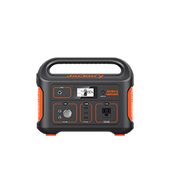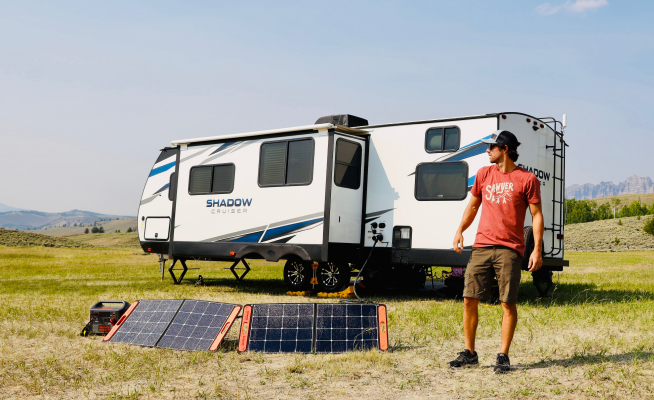Ultimate Guide to Solar Panel Voltage
Investing in a solar power system boils down to understanding how much power or energy it can produce to charge appliances. One of the paramount factors that specify the quality of solar panels is the voltage. In simple words, the solar panel voltage determines how much voltage does a solar panel produce while working.
However, the answer is not straightforward. It’s worth noting that the solar panel voltage depends on various factors, including the number of solar cells used in series, solar cell efficiency, the angle and intensity of the sun’s rays falling on the panel, and the temperature. In addition, it will vary depending on which model and size of the solar system you choose.
Jackery is one of the leading global manufacturers of premium-grade solar panels.
Below we include the top solar panels from Jackery and their associated technical parameters like voltages.
|
Jackery SolarSaga 100W Solar Panels |
 |
|
- Power Voltage: 18V - Open Circuit Voltage: 21.6V - Peak Power: 100W - Operating Temperature Range: -10-65℃ - ETFE-Laminated Solar Cells |
|
|
Jackery SolarSaga 80W Solar Panels |
 |
|
- Power Voltage: 22V - Open Circuit Voltage: 28.5V - Peak Power: 80W - Operating Temperature Range: -10-65℃ - Dual-Sided Panels |
What Is Solar Panel Voltage?
In solar photovoltaic (PV) systems, the voltage output of the PV panels typically falls in the range of 12 to 24 volts. However, the total voltage output of the solar panel array can vary based on the number of modules connected in series.
Calculating the solar panel voltage is crucial as it helps you understand how many modules are connected and the power they can generate. Once you know the solar panel voltage, you can easily design, install, and maintain an efficient solar PV system.
What Is Solar Panel Amp And Watt?
Solar amps and watts refer to the electrical energy produced by solar panels. While solar amps measure the electrical current produced by solar cells, solar watts refer to the amount of power delivered to any electrical load.
Both the electrical units — amps and watts — directly affect the efficiency rating of the solar panels. That means if the efficiency rating is high, there is higher production of solar amps and watts by the PV panels.
In short, high-efficiency solar panels tend to produce more watts and amps than low-efficiency panels available on the market. Understanding electrical units like amps, watts, and voltage of solar panels before purchasing will help you select the right solar system that meets your power needs.
The Types Of Solar Panel Voltages
Solar panels have multiple voltages associated with them, including voltage at open circuit, voltage at maximum power, nominal voltage, temperature corrected VOC, and temperature coefficient of voltage.
- The open circuit voltage generally lies between 21.7V to 43.2V.
- The maximum power voltage usually lies between 18V to 36V.
- The nominal voltage varies, but the general values are 12V, 18V, 20V, or 24V.
|
Nominal Voltage |
VOC - typical |
VMP - typical |
Number of cells in series |
|
12V |
21 |
17 |
36 |
|
18V |
30 |
24 |
48 |
|
18V |
33 |
26 |
54 |
|
20V |
36 |
29 |
60 |
|
24V |
42 |
35 |
72 |
Let us understand the different types of solar panel voltages below.
Voltage at Open Circuit (VOC)
The voltage measured with the multimeter or voltmeter when the PV module is not connected to any load is called voltage at an open circuit. The main use of VOC is to measure the maximum power output potential of the solar panel when it is fresh out of the box.
You can also use VOC as a reference voltage for the MPPT (Maximum Power Point Tracking) algorithms in solar charge controllers. Finally, VOC can help determine the temperature-corrected VOC of the solar panel.
As you can see in the below graph, the VOC is the maximum voltage from the solar panel cell, given that the net current is zero.

Voltage at Maximum Power (VMP or VPM)
When the solar module is connected to a load and operates at its maximum power output under Standard Test Conditions (STC), it is defined as the voltage at maximum power.
During VMP or VPM, the solar panel generates maximum watts. However, it’s generally 70-80% less than the voltage at the open circuit. You can find the VMP or VPM on the modules specification sheet.

Nominal Voltage
Nominal voltage is an approximate solar panel voltage that can help you match equipment. The voltage is usually based on the nominal voltages of appliances connected to the solar panel, including but not limited to inverters, batteries, charge controllers, loads, and other solar panels.
One important thing to note here is nominal voltage is not a real voltage. If you want to charge a small 12V battery, you can use a 12V solar panel, which will supply effortless power to the battery. However, that does not mean the nominal voltage and actual operating voltage are the same.
For instance, a 12V battery might have an operating voltage that fluctuates between 11.5V to 14V. However, it will still be referred to as a 12V battery. The most common nominal voltages you will come across while choosing a solar panel are 12V or 24V.
Temperature Corrected VOC
The role of temperature-corrected VOC is to stabilize the rise of VOC in a solar array during cold temperatures. The voltage ensures that the connected devices like grid tie inverters or MPPT controllers are not damaged due to temperature fluctuations.
Temperature Coefficient of Voltage
The temperature coefficient of voltage is defined as the change in volume based on temperature. The core purpose of calculating the temperature coefficient is to understand cold temperatures/high voltage situations for solar panels. In addition, it helps you to choose the components that work well in certain temperatures.
What Affects The Solar Panel Voltage?
The solar panel voltage varies depending on multiple factors. Some of the most common factors include the following:
Solar Panel Efficiency: The solar cell efficiency is its electrical power output divided by the incident light power. If the solar panel efficiency is high, it can produce more voltage using the same amount of sunlight.
Solar Cell Size: The more the surface area of the solar cells, the higher the number of photons hitting the cells. That means you can expect a high voltage output per square foot.
Sunlight Intensity: The intensity at which sunlight strikes the solar panels affects the voltage. When more photos from the sun’s rays fall on the panels, they produce more electricity.
Sunlight Angle: If the sun is at a low angle, the sunlight travels through more atmosphere, leading to scattered photons. Hence, it leads to a lower voltage output.
Connection of Solar Cells: In the solar power system, solar cells are connected in series or parallel. Combining the cells in series increases the total solar panel output voltage while the current remains unchanged.
Temperature: When solar panels work at higher temperatures, the solar cell materials have to face high resistance. As a result, a lot of electricity is lost as heat. Therefore, if you want to increase the output voltage of your solar panels, it's best to keep them cool.
How To Calculate & Test The Solar Panel Voltage?
PV or photovoltaic voltage is the energy generated by a single PV cell. That means calculating the PV voltage defines which size of PV system will suit your power needs.
Let’s answer the most important question first: how much voltage does a solar panel produce?
Start the calculation by finding the max module voltage or Module Voc_max by correcting the lowest expected ambient temperature at the installation site.
Formula: Module Voc_max = Voc × [1 + (Tmin - T_STC) × (Tk_Voc/100)]
Here,
VOC = Open current voltage of modules (Generally available on the datasheet)
Tmin = Lowest expected ambient temperature (Check the temperature of your location to find it out)
T_STC = Temperature at standard test conditions, which is usually 25°C
Tk_Voc = Temperature coefficient of module’s open circuit voltage
Example: Let’s say the open circuit voltage of a module is 30V, the lowest expected ambient temperature is -10°C, the temperature coefficient of the module’s open circuit voltage is -0.3% per °C, and the temperature at standard test conditions is 25°C.
Plugging these values into the formula, we get:
Module Voc_max = 30V x [1 + (-10°C - 25°C) x (-0.3% per °C/100)]
Module Voc_max = 30V x [1 + (-35°C) x (-0.003)]
Module Voc_max = 30V x [1 + 0.105]
Module Voc_max = 33.15V
So the maximum open circuit voltage of the module at the lowest expected ambient temperature of -10°C is 33.15V.
Calculate solar array voltage
The solar array voltage of your system depends on how you connect the modules — series or parallel. This is because the voltage of each module adds up when they are connected in series, while it remains unchanged during parallel connection.
Test the solar panel voltage
A voltmeter or multimeter can help you measure the solar panel output voltage. Simply connect the multimeter with the solar panel output terminals to measure current and voltage.

Jackery Solar Panels With High Voltages
The PV modules with high voltage are likely to generate more power than low-voltage panels. Jackery is one of the top manufacturers of outdoor solar utilities, including solar panels and power stations.
The portable and foldable Jackery SolarSaga Solar Panels come in various sizes, voltages, and capacities to meet users’ power needs. For instance, you can connect Jackery SolarSaga 200W Solar Panels With Jackery Explorer 3000 Pro Portable Power Station to build an ultimate solar power system for your home or outdoor adventures.

Jackery SolarSaga 100W Solar Panels
Jackery SolarSaga 100W Solar Panels are designed with an open circuit voltage of 21.6V and a power voltage of 18V. The solar panels can supply a peak power of 100W. In addition, the solar cell efficiency of the panels is 23%, ensuring that it will convert more sunlight into electricity.

Jackery SolarSaga 80W Solar Panels
Jackery SolarSaga 80W Solar Panels are designed to offer a peak power of 80 watts. The open circuit voltage is nearly 28.5V, while the short circuit current is 3.71A. The dual-sided panels enhance solar efficiency by generating electricity from both sides, helping you charge the battery faster.

Let us compare the top three Jackery SolarSaga Solar Panels, specially designed to charge batteries faster.
|
Series |
Power Voltage |
Open Circuit Voltage |
Compatible with |
Conversion Efficiency |
Input & Output Ports |
|
Jackery SolarSaga 100W Solar Panels |
18V |
21.6V |
Jackery Explorer 240, 300, 500, 1000, and 1500 power stations. |
24.3% |
USB-A Output: 5V, 2.4A
USB-C Output: 5V, 3A |
|
Jackery SolarSaga 80W Solar Panels |
22V |
28.5V |
Fully compatible with all Jackery Explorer power stations. |
25% |
— |
Solar Panel Voltage FAQs
Why solar panels have so many voltages?
Solar panels have different voltages associated with them due to different solar panel types, their placement in the system, and the power production. For instance, voltages are added when solar panels are connected in series.
The higher the voltage, the higher power you can expect. In contrast to series, the watts get added when solar panels are connected in parallel. Jackery SolarSaga Solar Panels have different voltages, ensuring you can charge various sizes of solar batteries to supply power to the appliances.

What’s the difference between solar panel voltage and battery voltage?
Solar panel voltage and battery voltage are different, where the former exceed 20-30% of the working voltage of the battery to ensure normal battery charging. That means a solar panel always produces higher power than the energy required to charge a battery. On the other hand, the battery voltage is the operating volts of the battery. It is generally determined by the number and types of cells in the battery.
How many volts should a solar panel charge?
Generally, the 12V PV panels produce around 16-20 volts, and the deep cycle batteries usually require 14-15V to fully charge.
Final Thoughts
An average 12V solar panel can generate somewhere around 17 volts. However, it’s worth noting that the output voltage is affected by multiple factors. Understanding the solar panel voltage will help you design your own PV system for safely charging all your electrical appliances.
Jackery SolarSaga Solar Panels are highly efficient solar modules that can charge different types of batteries. In addition, you can connect them with Jackery Explorer Portable Power Station to charge home or outdoor appliances for long hours.
Subscribe to the Jackery newsletter and receive all the latest news about new products, exclusive deals, and promotional offers in your inbox.
Disclaimer:
The runtime mentioned for appliances powered by Jackery is for reference only. Actual runtime may vary under different conditions. Please refer to real-world performance for accurate results.












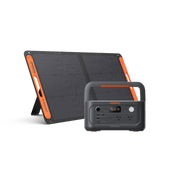




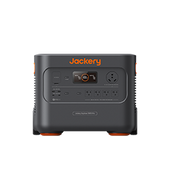
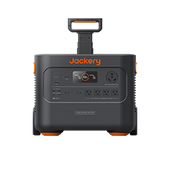

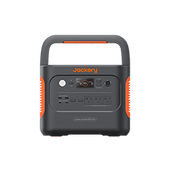






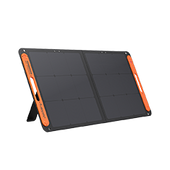


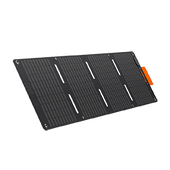



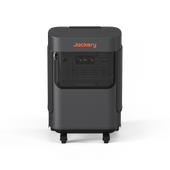




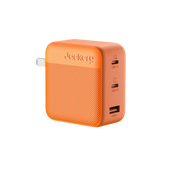
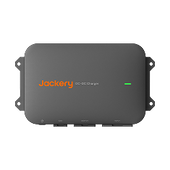
![[Add-on] Jackery Manual Transfer Switch for Explorer 5000 Plus](http://ca.jackery.com/cdn/shop/files/add-on-jackery-manual-transfer-switch-for-5000-plus-240V.webp?v=1757043692&width=170)











